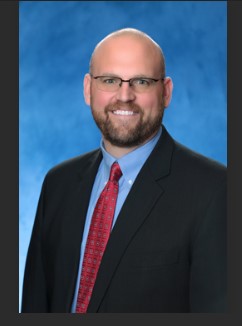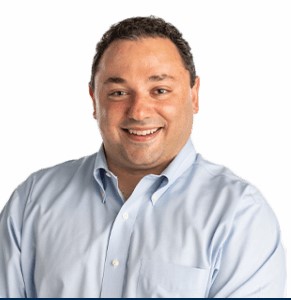
Courtesy photo
Nick Schroeck, an associate professor at the University of Detroit Mercy Law School.By JADA VASSER
Capital News Service
LANSING – A recent U.S. Supreme Court ruling that struck down race-conscious college admissions has some environmental justice activists on edge.
They say the decision could make it harder to protect marginalized communities that are victims of disproportionate environmental harm.
The Supreme Court ruled 6-3 in June that public colleges could no longer consider race as an admissions factor because doing so violates the U.S. Constitution’s equal protection clause.
The court majority said race-conscious policies and laws unfairly favor minority applicants, making it harder for some qualified white applicants to get accepted to colleges.
Policies that support the fight for environmental justice also have racial implications, said Nick Schroeck, an associate professor at the University of Detroit Mercy Law School.
Minority communities that are adversely affected the most by environmental injustices are often overlooked in Michigan, Schroeck said.
Residents of Black and brown neighborhoods suffer most from the harsh effects of pollution due to their location and systemic inequalities, he said. Examples include communities that are subjected to dangerous air pollution from factories and other industries.
Some advocates of anti-pollution programs in such communities say they fear that the admissions case may also undermine those programs.
An example of environmental injustice is the ongoing water crisis in Flint, a city with a majority Black population that has suffered from poor water quality due to governmental decisions that city residents could not control.
Schroeck said environmental justice considerations could become vulnerable to legal challenges because of the Supreme Court admissions decision.
So far, however, the decision has not resulted in legal challenges to environmental justice programs, Schroeck said.
But defenders of such programs still express concern that may yet happen.
“There has not been a ruling attacking President Joe Biden’s executive order on environmental justice,” Schroeck said. “But that could change. (The Supreme Court) has shown a willingness to take some pretty aggressive diversions for what’s been settled law.”
According to the Environmental and Energy Law Program at Harvard University Law School, Biden issued an executive order that reinstates the nation’s fight and commitment to environmental justice for everyone. The order was an update of a 1994 order by then-President Bill Clinton that said environmental justice in minority and low-income communities needs to be addressed.
Pollution disproportionately affects Black and brown communities, resulting in poorer health for their residents, reported Stateline, a nonprofit news site that covers state policy nationwide.
“There’s money going into energy efficiency for lower-income communities, helping people replace their furnaces with more efficient ones,” Schroeck said. “Replacing windows, all these types of things, could potentially be vulnerable to a legal challenge because of the Supreme Court. We could or could not see that happen.”
It is possible that the court’s decision will interfere with environmental justice policies, said Oday Salim, the director of the Environmental Law and Sustainability Clinic at the University of Michigan Law School.
But it’s unlikely, Salim said.
Many environment policies are not race-based but depend on other factors that may lead back to race, he said.
The admissions case relies on multiple academic factors, such as extracurricular activities prior to college and credits earned before attending college, while taking note of applicants’ race, Salim said.
“There’s reason to think that the impact (on anti-pollution programs) would be small,” Salim said. “One is that there are not that many environmental justice laws on the books that are race-conscious, at least not expressly race-conscious,” he said.
Salim is planning to host a panel about the issue later this year.
As chair of the Environmental Justice Committee of the American Bar Association, he said he wants the panel to get into the details of the admissions case and what it means for environmental justice programs and laws.
“We’re trying to better understand what kinds of environmental justice policies exist in the world right now and in the United States,” Salim said. “And we’re trying to understand the vulnerability of the race-conscious ones.”
A frequent environmental justice issue arises when the health of residents in one community is worse than that of residents in other places due to where they live.
The reasons may include the location of factories and decaying infrastructure in communities where many families have historic health problems or low incomes, Schroeck said. That can tie into the environmental justice objective without specifically mentioning race.
It leaves room for questioning how far the government can go in creating laws to address environmental injustice.
“You can’t look at the history of environmental laws in this country without considering race,” Schroeck said. “Heavily polluting industries are located only in areas where minorities live, so you can’t have that discussion about our environmental history without recognizing race.”
Jada Vasser reports for Great Lakes Echo.

Courtesy photo
Oday Salim, director of the Environmental Law and Sustainability Clinic at the University of Michigan Law School.
Asher Freedman